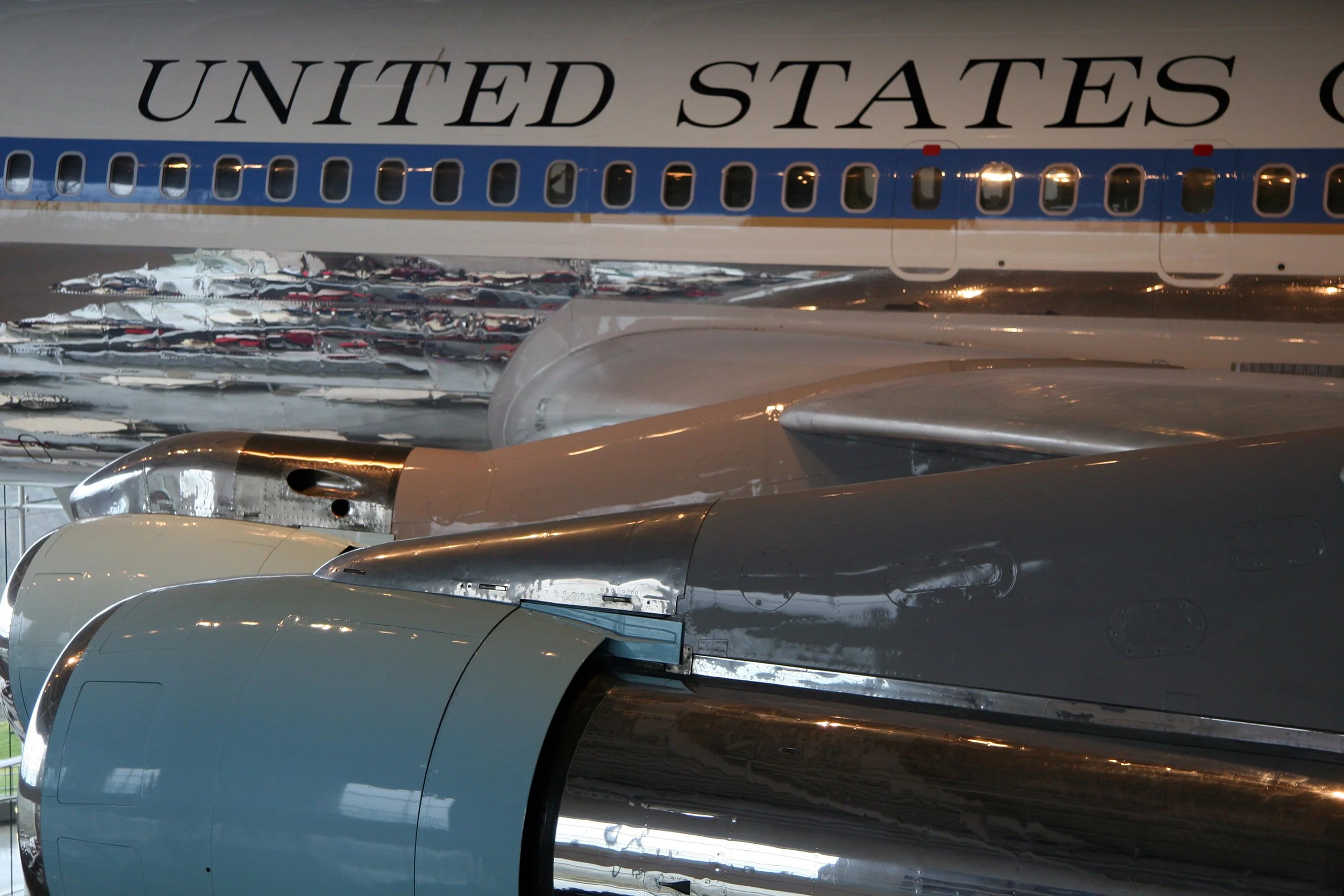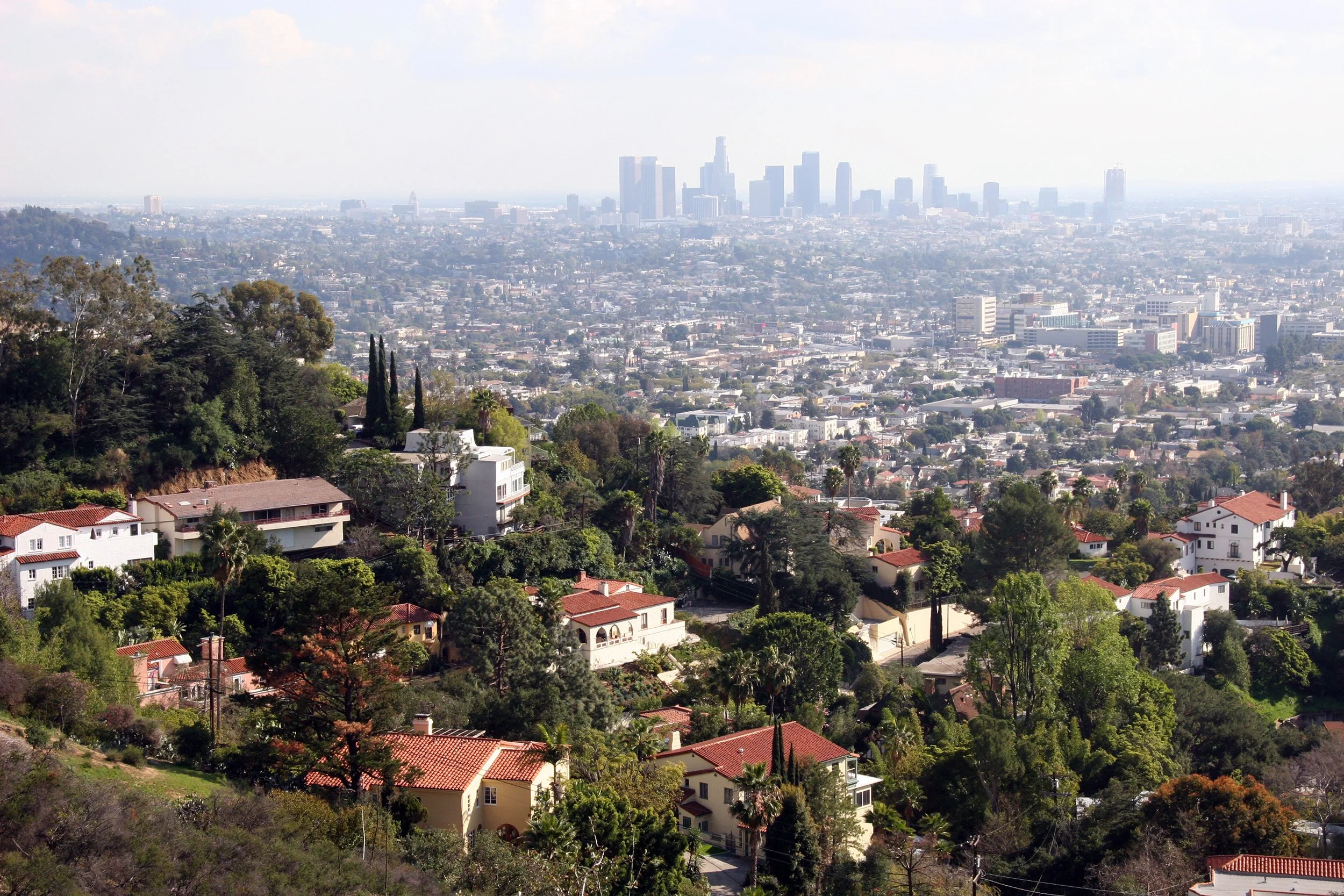
Page 2 of 3
Yorba Linda, California
I've collected all the evidence, I'm off the edge, I'm on the fence
The second of the slide show's two Presidential Libraries (so far at least) was in Yorba Linda, California and belonged to Richard M Nixon, the only president (so far at least) with the middle name of Milhous. The library (like all Presidential Libraries) is really a monument to the legacy of the man, a constant reminder that history is written by the victors, or quite possibly in this case the donors. The exhibits had occasional anomalies and departures but more or less did follow the events of Nixon's rise, downfall, bigger rise and bigger downfall in a reasonably academic manner. It was also pretty easy to follow his personal grudges, to see much he hated Bobby Kennedy (called a coward in the interpretive displays) and how he believed he was ripped off in 1960 by his brother John (interpretive displays declare that no one will ever know the true 1960 election results). Unfortunately the big Watergate exhibit was being renovated, although at least a few artifacts and recording devices were on view. I would think that that exhibit would be fascinating to see just in terms of how its presented and bracketed, to see whether or not it comes off as a serious break of the public trust or (like Clinton's impeachment was presented in the Little Rock Presidential Library) as nothing but a severely partisan witch hunt.
And, for god's sake, please do not touch the Berlin Wall.
The Nixon Library was not especially busy, normally a good thing but in this case perhaps not. From room to room and exhibit to exhibit, lonely, time trapped, Nixon worshipping docents kept engaging me to share pro Nixon facts and stories I did not especially care about. Luckily I was able to escape their zombie like clutches to walk out into the rain and right to Nixon's boyhood home, located on the now suburban Library property and seemingly well preserved, at least from the outside (it was closed that day due to the bad weather).
The most interesting artifact (for me at least) wasn't Nixon's boyhood home or the faithful recreation of the White House ballroom but instead Nixon's very own Marine One helicopter. This is the very helicopter that on August 9, 1974 took Nixon into exile from the lawn of the White House. A tangible piece of history of both a country and of its most complex and conflicted modern president, it holds a sadness that other artifacts only suggest. Plus everyone loves helicopters.
While Nixon's library has that lone helicopter, Reagan's library way out in Simi Valley not only has a less historically significant helicopter but raises the stakes with its very own Air Force One. The library's star attraction saves an otherwise mediocre experience (cheesy exhibit design, boring artifacts, rattlesnake warnings at Reagan's grave) with a spectacular view and a very smart design. Visitors first see Air Force One from a distance, then tour it (no photos allowed inside), then soon find themselves underneath the plane, gazing up at a view that would be fascinating whether or not the plane was Air Force One or just another Boeing 707 aircraft.
Inside the Air Force One that served Reagan, Carter, Ford and Nixon (and was Nixon's connecting flight to California after that helicopter ride from Slide 15B) was not nearly as impressive as imagined. First it was a 707, so there's not all that much room to begin with. Then there's the plane layout- a cockpit followed by individual cabins that go from reasonably big and important (Presidential cabins) to cramped and unimportant (for the traveling press). It is hard to imagine anyone enjoying long flights to China or Russia on that thing, unless of course you were the president. As always, it's good to be king.
These two pictures show the fun of the Air Force One pavilion and why a visit to the Reagan Library is recommended regardless of your political leanings or aspirations. Just to stand underneath a plane like that, all awash in the reflection of some possibly nameless rainy California mountains, to see the landing gear at eye level and then towering above you allows you to experience an angle, a frozen moment in time, unlike any other.
On my eight or ninth or tenth trip to Los Angeles in these past few years, I finally made my first visit inside Frank Lloyd Wright's landmark Hollyhock House (it was closed for renovations the last time I tried to visit). The house was everything I expected, with classic Wright interiors and interesting interventions by Wright's then soon to be fired project architect Rudolph Schindler. The tour's docent told terrific stories of Wright and client Aline Barnsdall, of a design that was changed and rechanged and changed again, of areas that were repaired and replaced and repaired again, of an architect client relationship over decades that went from good to bad and good again- once again everything you would ever expect from a Frank Lloyd Wright house.
Time and lateral forces have not been especially kind to the Hollyhock House. First of all it's made from un-reinforced concrete, a material that is not recommended (ever) for seismic zones as active as that part of Los Angeles. Second, a lot of the house's features seem not to have been designed with longevity in mind. One such feature was the capture of a natural spring that was rechanneled to run through the courtyard and through the living room (and through a well surrounding the fireplace) and right on out the other side. Problem one was bugs (many breed in near stagnant water), the second was smell (stagnant water isn't always refreshing) and the third was rain. It does rain in Los Angeles (including both weekends I visited), and rain caused the stream to quickly overflow and quickly flood the living room. Shockingly the stream only survived a short time before Barnsdall had it shut down, somehow deciding that all those bugs, smells and floods somewhat distracted from her otherwise fine new home.
I am admittedly not always a Frank Gehry fan, partly because of the skin deep shallowness of his often repeated designs and partly because of an innate, unexplainable dislike of mainstream popular culture (I'm not afraid to admit it). That said, it is almost impossible to dislike Frank Gehry's Walt Disney Concert Hall, his firm's best building (by far) to date and the one he will be remembered for long after his death. What elevates the building from curvy titanium mess to unforgettable composition (for me at least) is the building's circuitous hiking trail gauntlet of a pedestrian path, a series of steps and tight passages that rise, fall and circle the hall, connecting hidden views and hidden plazas with fantastic glimpses both inside, outside, behind and beyond all of those curved panels. One of the great architectural experiences anywhere and one that you really need to experience to believe.

